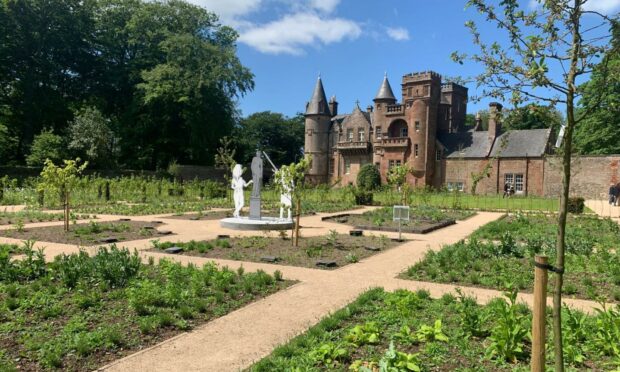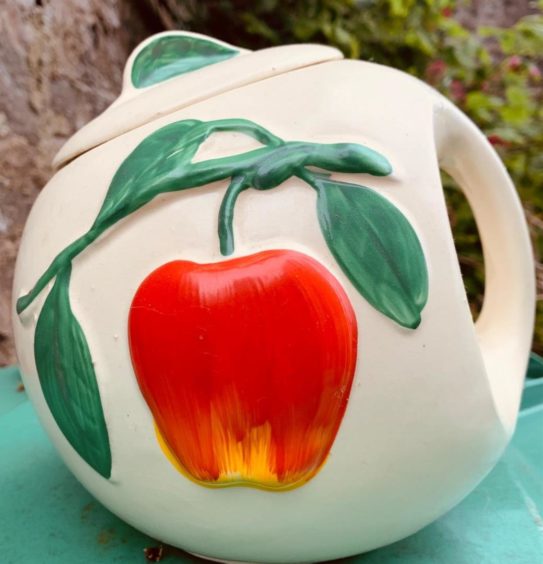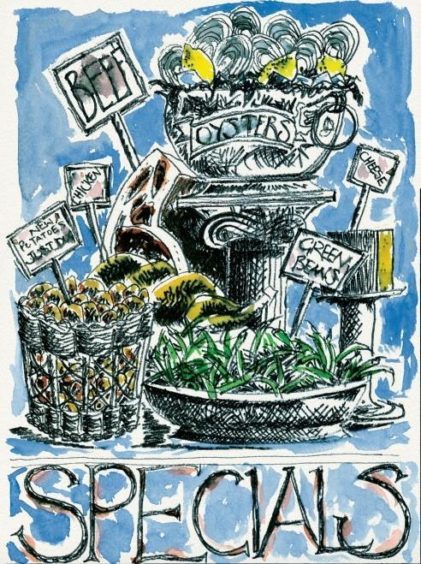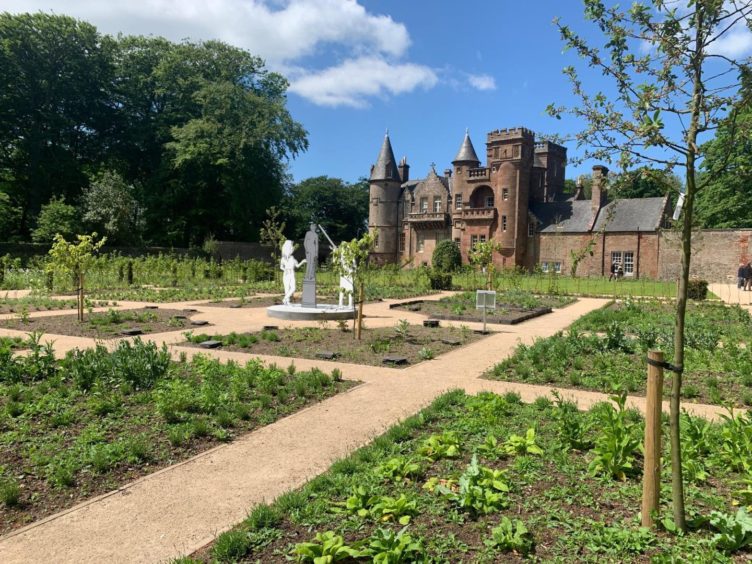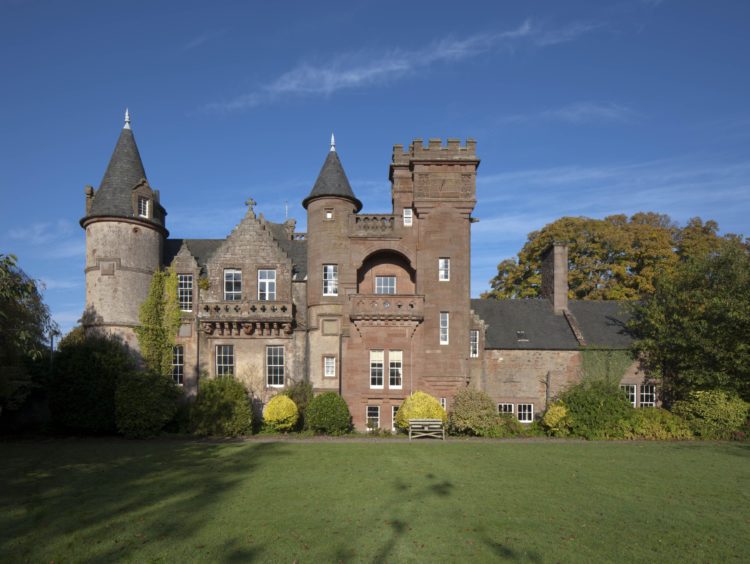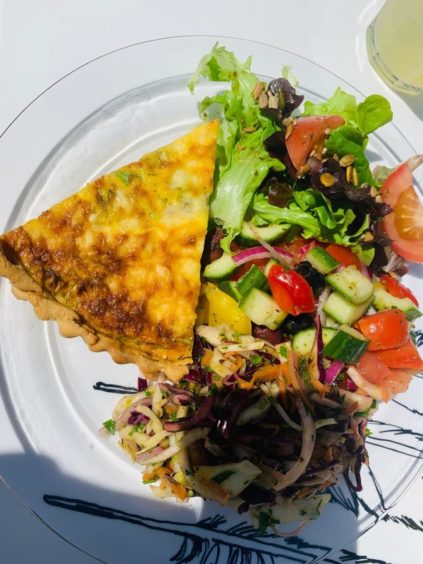From old cookery books to Andy Warhol’s actual cookie jar to a trip to the restaurant at Hospitalfield House in Arbroath, Murray reminisces on the art of food and what it means in today’s foodie culture.
I have a collection of cookery books by Ambrose Heath, published by Faber and Faber in the 1930s. They’re wonderful artefacts with the most beautiful illustrations, probably bought for a song at a jumble sale somewhere – I’m such a hoarder that I no longer remember where many of the things in my house came from, nor do I ever recall the price I paid.
There isn’t a square foot in this house that isn’t filled with something and I’m embarrassed to admit that the window cleaner probably has a clearer insight into my deranged soul than even my best friends do – because there is no escape from the fact that my home is the habitat of someone who could clearly shop for Scotland and won’t stop until he owns everything displaying a price tag from Jedburgh to John o’Groats.
It’s an obvious understatement to say I’d make a lousy minimalist and the idea of an ascetic lifestyle is enough to have me queuing at the doors of TK Maxx first thing tomorrow morning just incase they have those Armani underpants in a different colour from the 12 pairs I already have.
Warhol’s wares
When Andy Warhol died and they were clearing his house people were shocked to find that he had rooms stuffed full of purchases, mostly unopened, still sitting in the shopping bags they were transported home in. I’m ashamed to say I might be Fife’s flea market Warhol – the Poundland pop artist of the pandemic, a man who won’t ever be thwarted by the shops closing as long as he has access to eBay.
Warhol went shopping every day and as well as producing multiples in his own art practice he bought in multiple too.
One of my own most treasured possessions is a cookie jar from Andy Warhol’s own kitchen, its stellar luminescence undimmed by the fact that he owned hundreds of such kitsch biscuit barrels – although I have yet to see any pictorial evidence of him removing a Hobnob or a Wagon Wheel from mine.
Nevertheless, He bought it, He touched it and thus He conferred greatness upon it; my cookie jar is displayed on my shelf with the reverence I’d show to a priceless Fabergé egg, and is a quiet reminder of two of my main passions in life – art and food. When the two combine – a restaurant filled with artists, a gallery opening with great things to eat, or a cookery book with fantastic photographs or illustrations, I’m happy.
I’m not quite at Warhol’s level of consumerist mania but sometimes think I’m getting close. But everything I have, including multiple boxes of ephemera, has at least one thing in it that inspires or gives comfort in this increasingly homogenised life.
Ambrose Heath
Such things don’t need a purpose and some of them are rarely even looked at, but all of them give pleasure just by knowing that they’re there.
So, the Ambrose Heath books have delights like Bombay toast (melted anchovy butter mixed with two beaten egg yolks, spread on toast – a cousin of Scotch woodcock, I suppose) or the possibly more divisive Cadogan toast which is spinach purée beneath a poached oyster, the whole collation then blanketed in Mornay sauce and browned.
Both these delights can be found in the book Good Savouries which was published in 1934 (I choose to ignore that the book is rather disconcertingly dedicated to Poo).
My favourite book of the set is probably Good Drinks (1939), if only for the recipe A Cure for Drunkenness which advises five grains sulphate of iron, 16 grains magnesia, 11 drachma of peppermint water (?) and one drachma spirit of nutmeg. Dose; a wineglassful twice a day.
I mean, how hardcore is this when we softies all have access to Nurofen Plus, an eye mask and the promise of a bacon roll when the fog lifts? With this “cure”, if you haven’t lost the will to live by day two, you will at least have dropped a few pounds in weight, although your local pharmacist might have reported you to the drugs squad.
Farmer’s Joy
A recipe for Farmer’s Joy sounds much more the restorative ticket; “put a pint of sherry into a large bowl, dissolve in it two ounces of sugar and flavour it with a little grated nutmeg”. So far, so intoxicatingly conventional.
Now comes the tricky part, especially if you live in a place with no access to your own cow because you must then “milk the cow into the bowl until you have added about two quarts of milk, then stir it up and drink it”.
The thing that unites all these books – most notably Good Food Throughout The Year (1932) – is the set of wonderful illustrations by the artist Edward Bawden.
Bawden, along with Eric Ravilious, was a quite brilliant artist who often illustrated books (Ravilious provided illustrations for another Ambrose Heath book The Country Life Cookery Book but his best illustrative work was for High Street, his beautiful book on shopfronts, a joint venture with JM Richards).
Soho
I was reminded of Ravilious when I saw the superlative food drawings by Dundee-born chef Jeremy Lee, who has now been cooking up a storm as chef/proprietor at Quo Vadis in London for almost 10 years.
Quo Vadis itself is a good example of the marriage of art and food; it’s a beautiful building where many artists eat and somewhere that perfectly encapsulates the creative buzz of Soho.
Lee, a legendary figure in the catering world, is not only a brilliant chef but, like Simon Hopkinson and Alastair Little, is one of those figures who have earned the unrivalled respect of their peers and their public alike. His cooking is faultless; if you’ve never tasted his food, start with the classic smoked eel sandwich.
Jeremy’s Instagram feed is a celebration of all that’s good in food and it was here that I first saw his lovely drawings, recently shown to best effect in issue 10 of Luncheon magazine, itself a distillation of all that is good in food and art. Jeremy’s father and grandfather both illustrated comics and journals for DC Thomson for decades so it was especially poignant to see his wonderful work continue a family tradition.
Hospitalfield House
The fusion of art and food – along with stunning architecture – is best exemplified locally with a visit to the stunning Hospitalfield House in Arbroath, a staggeringly beautiful Scottish baronial house, regarded as one of the finest in the country.
Now an arts centre and a place of work and study, the house has hosted many legendary artists in residence, including Joan Eardley, William Gear, Peter Howson, Lil Neilson, the Two Roberts (Colquhoun and MacBryde) and, more recently, Callum Innes and Derrick Guild. Their public programme, overseen by inspired Director Lucy Byatt, is notably good. Mick Peter’s work, which combines sculpture, cartoon and social comment, is currently on view throughout the grounds.
A recent addition to the awe-inspiring architecture is a café space designed by architects Caruso St John, built on the site of the charming old greenhouse. I was so excited to see this new space and the day couldn’t have been better; a very strong sunlight reflected the beauty of the sandstone of the original building, the redesigned gardens were verdant and the promise of great food by chef Simon Brown was alluring.
I’m afraid to say though that, despite Caruso St John’s international reputation (current and past clients include Tate Britain, the V&A, English Heritage, Damien Hirst and the Gagosian Gallery), what they have done at Hospitalfield seems to me to be disappointing.
We ate alfresco because we wanted to look at the wonderful garden views and the adjacent Fernery, but sitting outside this new glass and steel addition only showed how clunky the whole thing is.
Sliding doors are unwieldy and heavy-handed, exposed pipes and guttering look ill-proportioned and ugly, their brutish one-dimensionality totally at odds with the beauty of the original building.
I’m sure many people might love this stark juxtaposition of old and new, and of course it’s one that can be fantastic when done with empathy and dynamism. However, this feels over engineered and cumbersome – less a mini Joseph Paxton or a Richard Rogers but rather an inelegant incongruous addition to a much loved and elegant friend.
The food
The food however was great and I could have eaten everything on the daily-changing menu. I’d wager that the new classic to have here is the Arbroath smokie, spring onion and cheddar tart, served with organic leaves (£5.50). It was truly fantastic and everyone around us seemed to be ordering it. David’s vegan haggis and vegetable sausage roll (£5.50) was equally delicious.
We shared salads which were notably fresh, the first a lemon and caraway seeded slaw and the second a vegan feta Greek salad (£10). I could easily have chosen the courgette, pea and mint soup (£4.95) or the Angus goat burger with cheddar sauerkraut, herb potatoes, beetroot ketchup and organic leaves (£11).
Dessert was an ace strawberry sponge (£3.50) and a polenta and orange loaf cake (£2.50). The coffee was excellent and service was charming. It was a most enjoyable lunch, and I can’t wait to return.
Hospitalfield is such a gem. It’s a place where you can lose yourself in beauty and thought – the gardens are wonderful and the view towards the sea is inspiring.
Musician Andrew Wasylyk wrote a whole album The Paralian based on this remarkable place and its surroundings, the music perfectly capturing the feeling of tranquility and reflection which this idyll inspires.
This is a hugely special environment in which it would be perfectly possible to escape the real world for a day – now punctuated, of course, with a great lunch.
Info
Hospitalfield House, Westway, Arbroath DD11 2NH Tel 01241 656124 www.hospitalfield.org.uk
